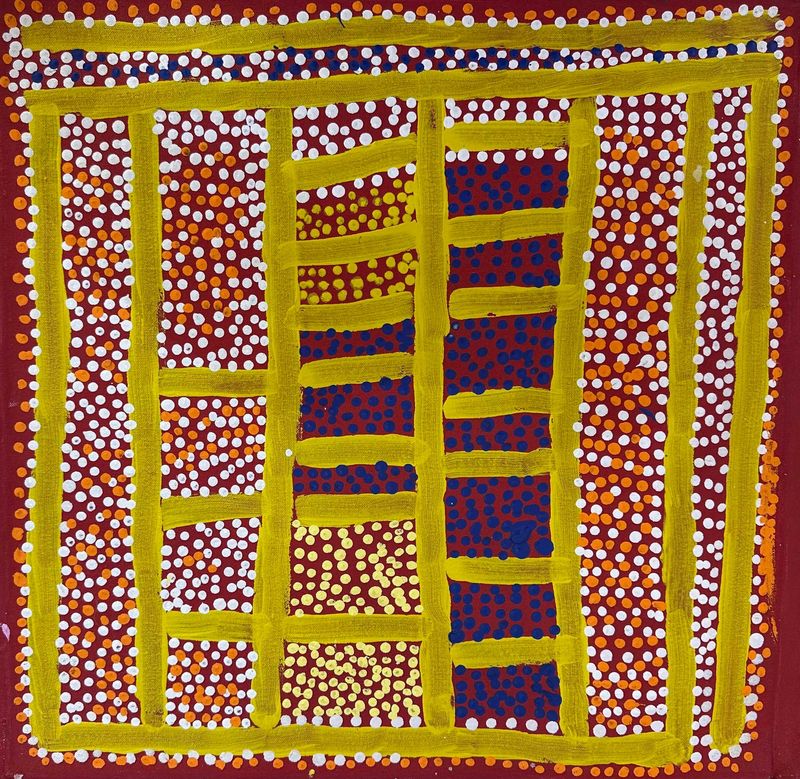Shorty Robertson Jangala
Shorty Jangala Robertson was born at Jila (Chilla Well), a large soakage and claypan northwest of Yuendumu, a remote Aboriginal community located 290 km northwest of Alice Springs in the Northern Territory of Australia. He lived a nomadic hunter-gatherer lifestyle with his parents, older brother, and extended Warlpiri family, traveling vast distances across desert country. They passed through Warlukurlangu, southwest of Jila, and Ngarlikurlangu, north of Yuendumu, visiting his skin brothers, the Jangala.
His childhood was marked by memories of the Coniston massacre, where Aboriginal people were killed. Families were also shot at Wantaparri, near Jila. Shorty had little contact with white people during his youth but recalled leaving Jila for Mt Theo to hide from being shot. His father died at Mt Theo, and he later moved with his mother to Mt Doreen Station and subsequently to the new settlement of Yuendumu. During World War II, the army relocated people from Yuendumu to the other Warlpiri settlement at Lajamanu. Shorty was separated from his mother during this time, but she came to get him on foot, and together they traveled hundreds of miles back to Chilla Well.
Due to drought, food, and medical needs, Shorty and his family periodically returned to Yuendumu. His working life was filled with adventure and hard work for various enterprises in the Alice Springs and Yuendumu areas. He finally settled in Yuendumu in 1967 after the Australian Citizen Referendum. Remarkably, despite his extensive travels and jobs, he was not involved in the burgeoning Central Desert art movement of the 1970s and 1980s, making his paintings fresh, vigorous, and new.
Shorty's use of colour to depict his Dreamings of Ngapa (Water), Watiyawarnu (Acacia), Yankirri (Emu), and Pamapardu (Flying Ant) is both vital and true to Warlpiri tradition. He began painting well into his 70s and became an active member of the Warlukurlangu Artists Aboriginal Association, an Aboriginal-owned and governed art center in Yuendumu. His first solo exhibition at Alcaston Gallery in 2003 received great artistic acclaim, and he continued to exhibit in Aboriginal art exhibitions in Australia and overseas.
Source material: Warlukurlangu Artists, Yuendumu

